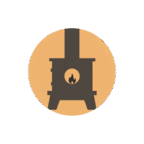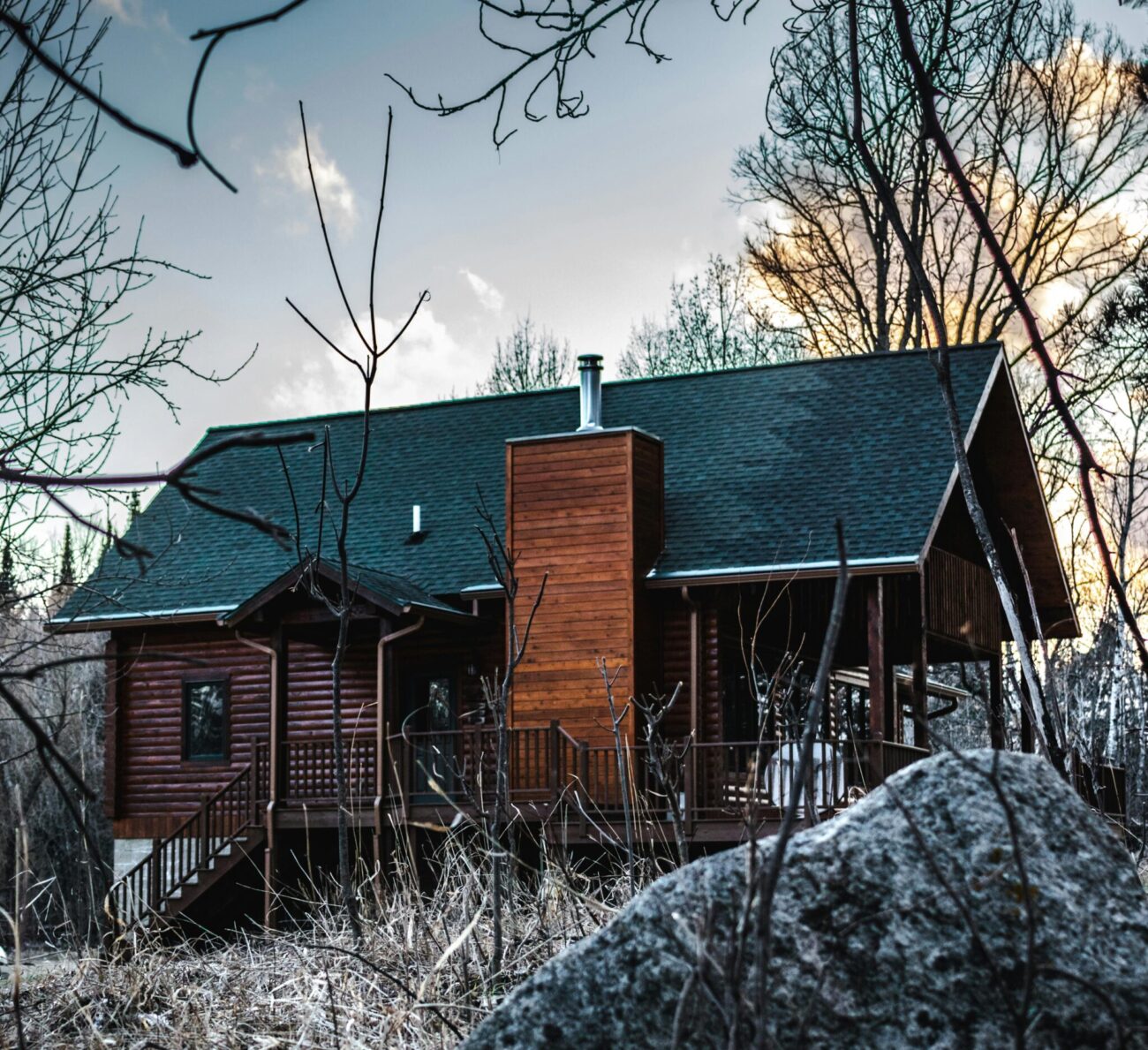Off Grid Cabin Heating Options for Winter Mornings: A Cold Start
Off grid cabin heating options become crucial the moment you step into a snow-covered cabin in January. There’s nothing quite like waking up in a remote cabin, buried deep in the woods, with frost on the windowpanes and the stillness of snow all around. The coffee percolator hisses on the stovetop while the wood stove glows warmly in the corner, throwing off just enough heat to chase the chill from your bones. I’ve lived off-grid for over 20 years now, and if there’s one lesson I’ve learned the hard way, it’s this: your choice in heating can make or break your off-grid experience.
In this article, I’ll walk you through the best off grid cabin heating options I’ve tried, tweaked, cursed at, and ultimately come to rely on. Whether you’re setting up your first homestead or upgrading your backwoods retreat, I’ll help you make the right choice for your needs, budget, and climate.
Best Off Grid Cabin Heating Options: Real-World Pros and Cons
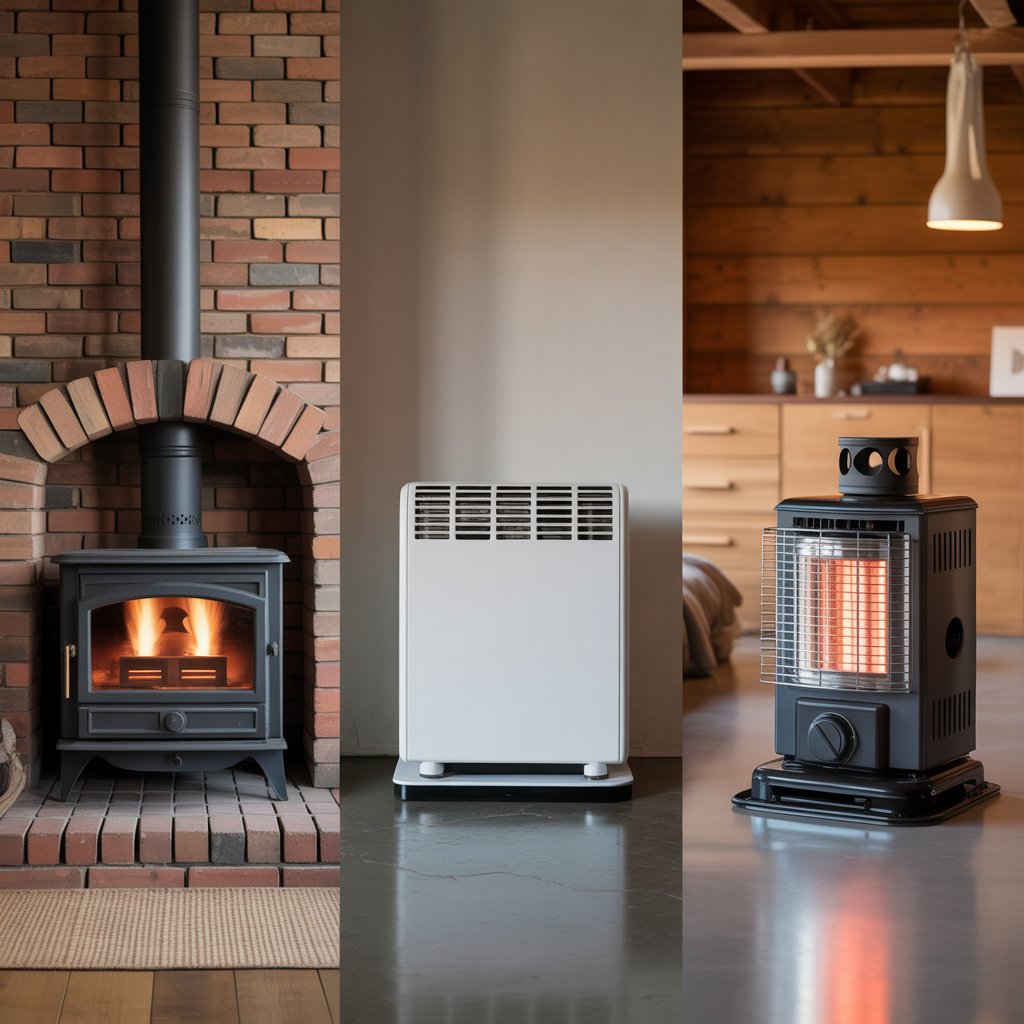
1. Wood Stoves: The Backbone of Cabin Life
For my money, there’s no beating a solid wood stove for cabin heating. Over the years, I’ve used everything from the classic Vermont Castings Defiant to the tiny Cubic Mini for a hunting shack. A small cabin wood stove is ideal for tight spaces, but make sure you understand BTU output, you’ll want about 20-30 BTUs per square foot of heated space.
Pros:
- Inexpensive fuel (if you have access to your own wood)
- Reliable during power outages
- Cozy and atmospheric
Cons:
- Daily maintenance (ashes, chopping wood, creosote buildup)
- Requires careful wood stove chimney installation cabin to avoid fire risk
Tip: If you’re looking for the best wood stove for small off grid cabin life, I personally recommend the Drolet Escape 1800. It’s durable, efficient, and clean-burning.
Learn more about top-rated wood stoves
2. Propane Cabin Heater: Clean and Convenient
For folks who want more “set it and forget it” simplicity, a propane cabin heater is a great option. I run a Mr. Heater Big Buddy in my guest cabin and it’s a champ.
Pros:
- Easy to install and use
- No electricity required
- Thermostat-controlled models available
Cons:
- Propane refills can be costly and logistically challenging
- Ventilation is critical to prevent CO buildup
3. Solar Heating: Supplemental, Not Standalone
In theory, solar thermal collectors sound great. In practice? They’re excellent as off grid heating solutions supplemental to another method.
Pros:
- Clean, free energy after install
- Great for shoulder seasons
Cons:
- Ineffective in low-sun winter months
- Requires battery storage or thermal mass
Real-world tip: A passive solar sunroom helped me reduce wood use by 20% in spring and fall.
National Renewable Energy Laboratory – Solar Heating
4. Biomass Pellet Stoves: Tech Meets Tradition
Pellet stoves offer modern efficiency but come with moving parts that can complicate off-grid reliability.
Pros:
- High efficiency (up to 80-90%)
- Automated feed systems
Cons:
- Require electricity (though some DC models exist)
- Pellet sourcing can be difficult in remote areas
When weighing your off grid cabin heating options, biomass might fit if you have reliable fuel delivery.

Off Grid Heating Cost Comparison: What Will It Really Set You Back?
Heating your cabin isn’t just about the upfront price tag. You need to think long-term: installation, fuel, and maintenance.
Initial Investment Breakdown:
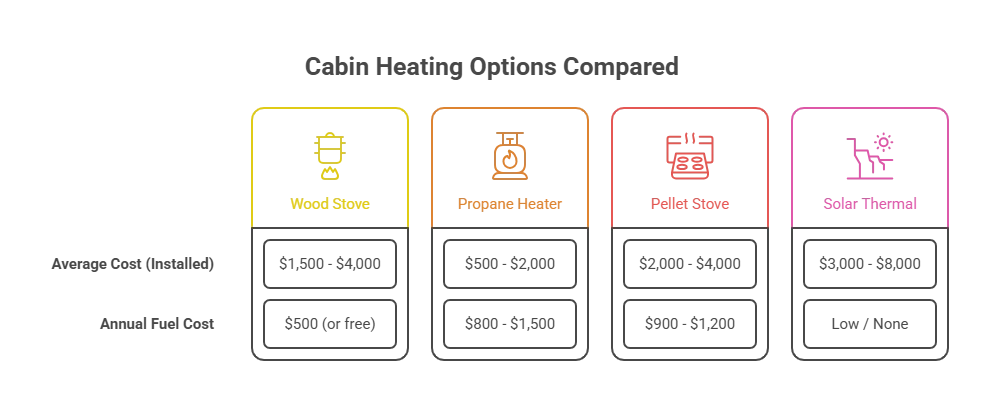
Pro tip: The cheapest way to heat an off grid cabin long-term is still a well-maintained cabin wood burning stove with your own wood supply.
Understanding the economics of your off grid cabin heating options will prevent regrets, and frozen toes.
Installing Off Grid Cabin Heating Systems: DIY vs. Professional Help

I’ve installed five different cabin heating systems over the years, and here’s my rule of thumb:
DIY If:
- You’re mechanically inclined
- You understand local fire codes
- You have access to proper tools
Hire a Pro If:
- You’re new to heating systems
- Your system involves propane or electricity
- You need to meet regional building codes
Wood stove installation cabin tip: Always install a double-walled pipe for ceiling penetrations and maintain 18″ clearance from combustibles.
Maintenance Requirements: Stay Ahead of the Game
No matter what heating option you choose, upkeep is non-negotiable.
Wood Stove Maintenance Checklist:
- Clean ash pan weekly
- Inspect chimney monthly
- Sweep flue every 3 cords burned
- Check door seals yearly
Propane Heater Maintenance:
- Test CO detector monthly
- Clean intake vents each season
- Check fuel lines annually
Winter prep tip: Schedule your deep clean and inspection by October, before snow flies.
Safety Tips for Efficient Cabin Heating
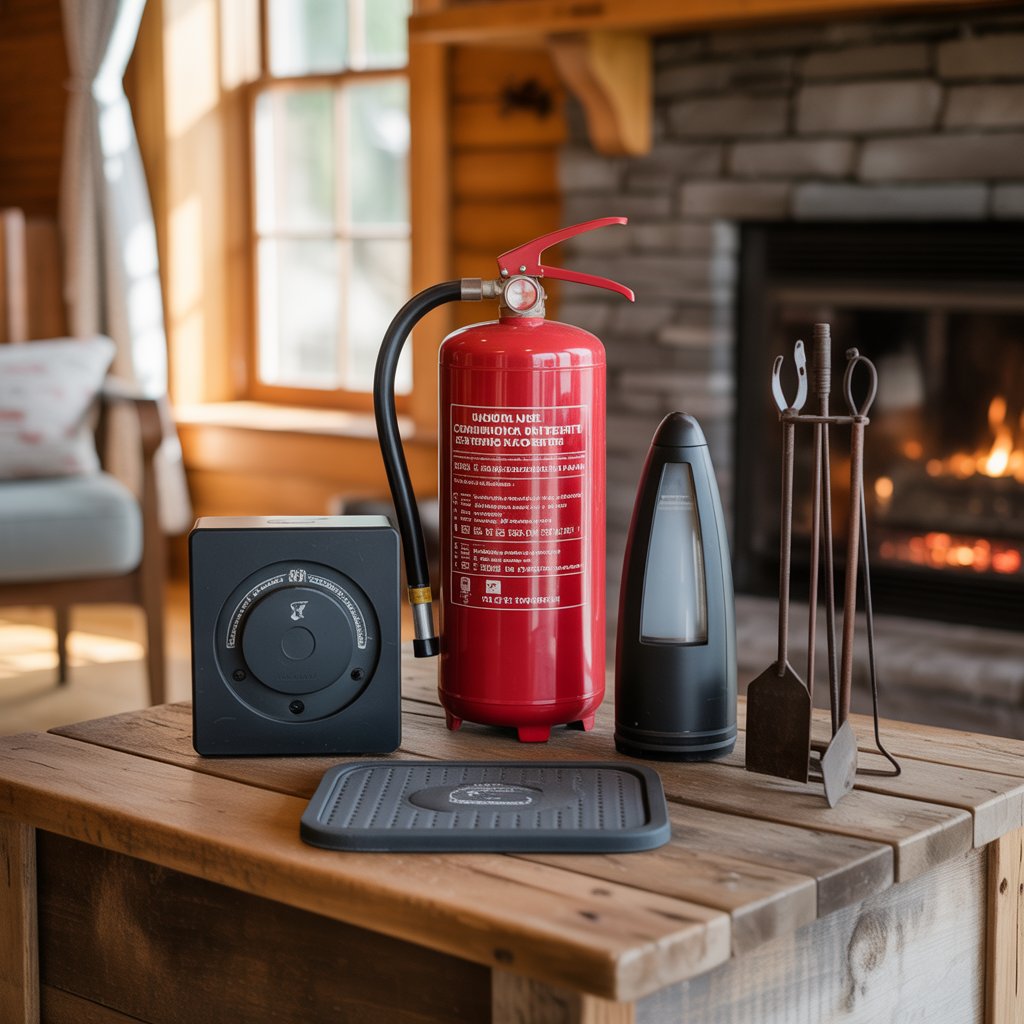
In my second winter, I nearly had a chimney fire from creosote buildup. Don’t learn the hard way. Here are some wood stove safety tips for cabins and beyond:
Must-Have Safety Gear:
- CO detector (battery-operated)
- Fire extinguisher (rated for wood/chemical)
- Heat shield for wall-mounted stoves
- Fireproof hearth pad
Safety Tips:
- Never leave propane heaters on unattended
- Always vent combustion appliances
- Don’t burn wet wood
Fire prevention isn’t a luxury in off-grid life; it’s survival. check out the U.S. Fire Administration Heating Safety
Regional Off Grid Heating Solutions by Climate
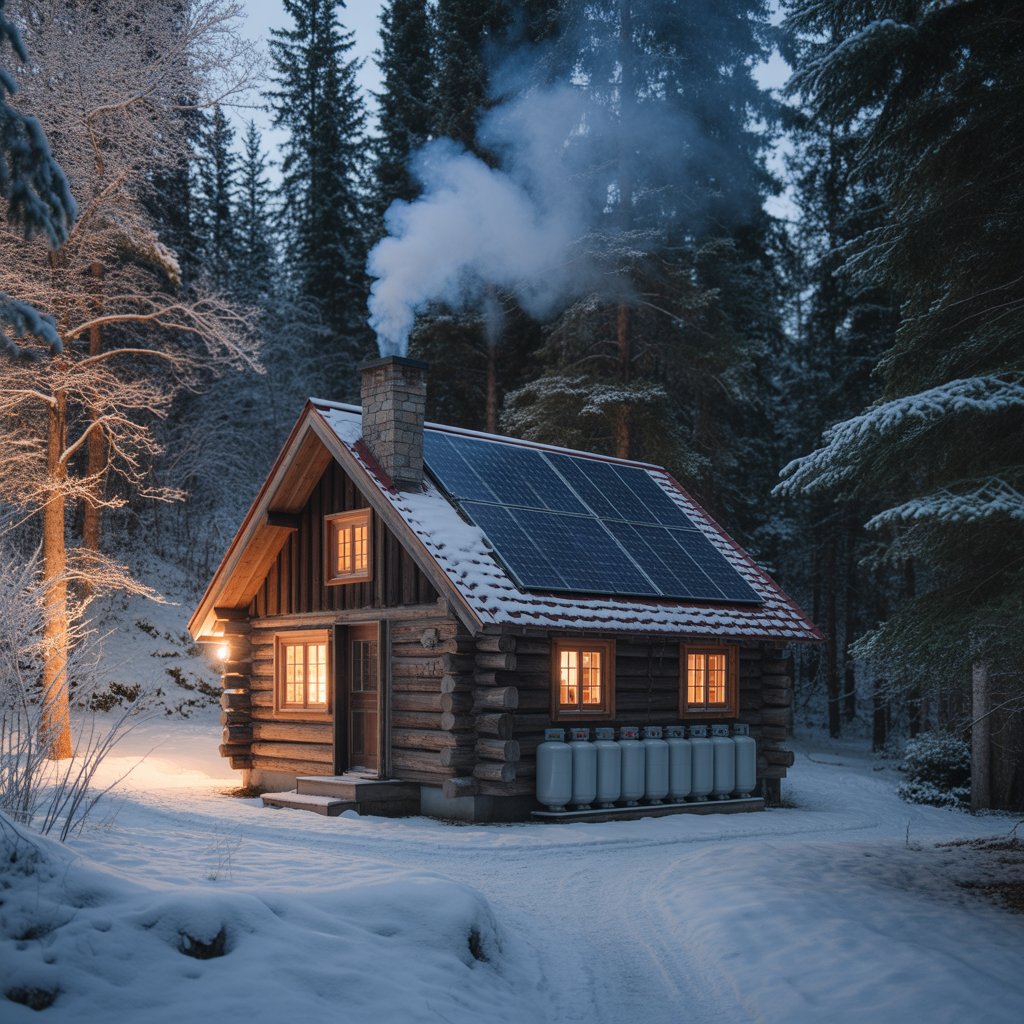
Cold Climates (Maine, Montana, Alaska):
- Prioritize high-output cabin wood burning stove
- Insulate floors and ceilings well
Mild Winters (Ozarks, Appalachians):
- Consider hybrid systems: solar + propane
High Elevations:
- Adjust propane systems for altitude
- Invest in secondary heat (pellet or passive solar)
No matter where you live, understanding your off grid cabin heating options ensures you’re prepared for whatever winter throws your way.
Troubleshooting Remote Cabin Heating Issues
Here are a few problems I’ve run into (and how I solved them):
Problem: Smoke Backdraft into Cabin
- Solution: Check for negative air pressure; crack a window when lighting fire
Problem: Uneven Heating
- Solution: Install small fans or vents to circulate air
Problem: Excessive Wood Use
- Solution: Burn seasoned hardwood only; install stove thermometer
Efficient cabin heating is 50% equipment, 50% technique.
Conclusion: Best Off Grid Heating Recommendations
After two decades living in cabins from the Rockies to the Adirondacks, here’s my short list:
- Best all-around: Drolet Escape 1800 (wood stove for cabin)
- Most convenient: Mr. Heater Big Buddy (propane cabin heater)
- Best supplement: Passive solar collectors
Whatever system you choose, make sure it fits your lifestyle, your climate, and your level of involvement. Off grid heating solutions aren’t just about comfort, they’re about survival, independence, and self-reliance. Research your off grid cabin heating options thoroughly before committing.
Stay warm out there.
FAQs About Off Grid Cabin Heating
How do I heat a cabin without electricity?
Use a cabin wood stove, propane heater, or passive solar. All work without power.
What’s the best wood stove for small off grid cabin setups?
Try the Cubic Mini Grizzly or the Vogelzang Defender. Compact but powerful.
Is propane or wood heat better for cabins?
Propane vs wood heat cabin debates boil down to convenience vs cost. Propane is easy, wood is cheaper.
What’s the safest cabin heating system?
Properly installed wood stove with CO detector and regular maintenance is safest long-term.
